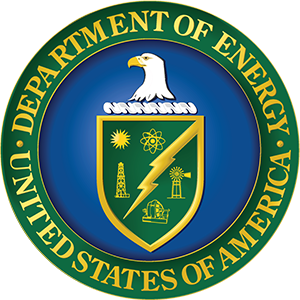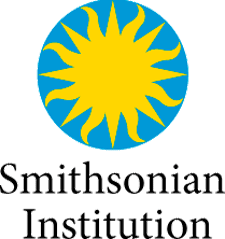The Compliance Tracking System (CTS) is administered by the U.S. Department of Energy's (DOE) Federal Energy Management Program (FEMP) to track federal agencies' progress toward meeting Section 432 of the Energy Independence and Security Act (EISA) of 2007. eProject Builder (ePB) is a secure, web-based data management platform that allows government, public institutions, and private facility owners and their energy service providers (such as ESCOs) to preserve, track and report information for their portfolio of energy retrofit projects.
This training educates attendees on how to efficiently transfer their project and measurement and verification data from ePB to the CTS. The ePB CTS reporting feature partially automates the transfer of project data between the two systems. Users are able to populate data from ePB directly into the MS Excel-based CTS upload template format, the CTS Initiated Projects Report, and the CTS Follow-Up Report. This feature reduces the reporting requirement burden for federal agencies by eliminating duplicate data entry work. This training steps users through the process of exporting the CTS report from ePB, completing additional required fields in the CTS template and uploading the template into the CTS system.
Instructors
Kurmit Rockwell, PE, CEM, LEED AP, U.S. Department of Energy Federal Energy Management Program Read Bio
Kurmit Rockwell serves as ESPC program manager where he oversees services, tools, and resources needed to assist agencies with implementing successful ESPC projects. Over a career spanning 25 years, Kurmit's work included engineering and all aspects of ESPC project implementation for federal, state, and local governments. His work in the public and private sector energy services industry has focused on evaluation and implementation of energy and water cost saving technologies, smart building energy optimization services, renewable energy systems, and demand side management. He holds a bachelor's degree in chemical engineering from Polytechnic Institute of New York University and a master's degree in building systems engineering from the University of Colorado. He is a registered professional engineer in multiple states.
Shankar Earni, Program Manager, Lawrence Berkeley National Laboratory Read Bio
Shankar Earni is a program manager in Building Technologies and Urban Systems Division, at Lawrence Berkeley National Laboratory, supporting DOE's Federal Energy Management Program's to develop, implement, and evaluate energy projects, including developing processes, tools, and resources to enhance the adoption of alternate financing mechanism for energy projects. Prior to LBNL, he worked as a senior performance assurance specialist at Johnson Controls Inc., where he was involved with auditing, project development, and implementation of energy projects in commercial buildings. Shankar also led and participated in several energy audits for industrial and commercial sectors to identify energy and productivity savings. He received his Ph.D. in industrial engineering and management and an M.S and B.S in mechanical engineering. He serves as a member of IPMVP committee, which is responsible for improving state of M&V practices.
Hannah Stratton, Program Manager, Lawrence Berkeley National Laboratory Read Bio
Hannah is the Program manager for Berkeley Lab's Energy Technologies Area (ETA). She supports a number of energy efficiency programs within ETA's portfolio, conducting research and analysis and providing programmatic management, development, and support. This includes eProject Builder, for which she contributes to software development, stakeholder engagement, and training.
Chris Tremper, Program Analysis, FEMP Read Bio
Chris Tremper has more than 25 years of experience providing analytical support to the U.S. Department of Energy's Federal Energy Management Program (FEMP). From 1990 to 2008, he managed multiple energy analysis contracts supporting FEMP, the U.S. Department of Agriculture, the U.S. Department of Homeland Security, and the U.S. Forest Service. He has developed and implemented energy data reporting protocols that have endured for more than a generation, accommodating the evolving needs and policy goals during that time. Tremper joined FEMP as a federal government employee in 2008. Most recently, he provided key data and analytical support to the White House Council on Environmental Quality to help frame new federal goals and assisted agencies in revising greenhouse gas reduction targets under Executive Order 13693. Tremper has a bachelor's degree from Wittenberg University in Springfield, Ohio.
Elizabeth Stuart, Program Manager, Researcher, Lawrence Berkeley National Laboratory Read Bio
Elizabeth (Liz) Stuart has worked at Lawrence Berkeley National Laboratory (LBNL) since 2009. She leads software development and stakeholder engagement for eProject Builder, the U.S. Department of Energy's secure, web-based, energy project data management system. She has been lead or co-author on more than two dozen LBNL reports and peer-reviewed journal articles on a range of topics including energy service company industry market and project trends, measurement and verification, building energy benchmarking, and energy efficiency and demand response programs and policies.
Learning Objectives
Upon completion of this course, attendees will be able to:
- Identify how to efficiently transfer project data between ePB and CTS using the ePB CTS feature;
- Identify key federal reporting requirements for ESPC, UESC and direct-funded energy retrofit projects;
- Recognize which project data is transferrable from ePB to CTS for the CTS Implemented Projects Report and the CTS Follow-up Report;
- Recognize how to generate the ePB CTS report for the user's projects in ePB — for both the CTS Implemented Projects Report and the CTS Follow-up Report;
- Identify how to populate the exported CTS reports with required (and optional) information for uploading into CTS;
- Recognize how to upload the ePB CTS report to the CTS website to comply with federal reporting requirements; and
- Recognize future planned improvements to the ePB CTS reporting feature.










